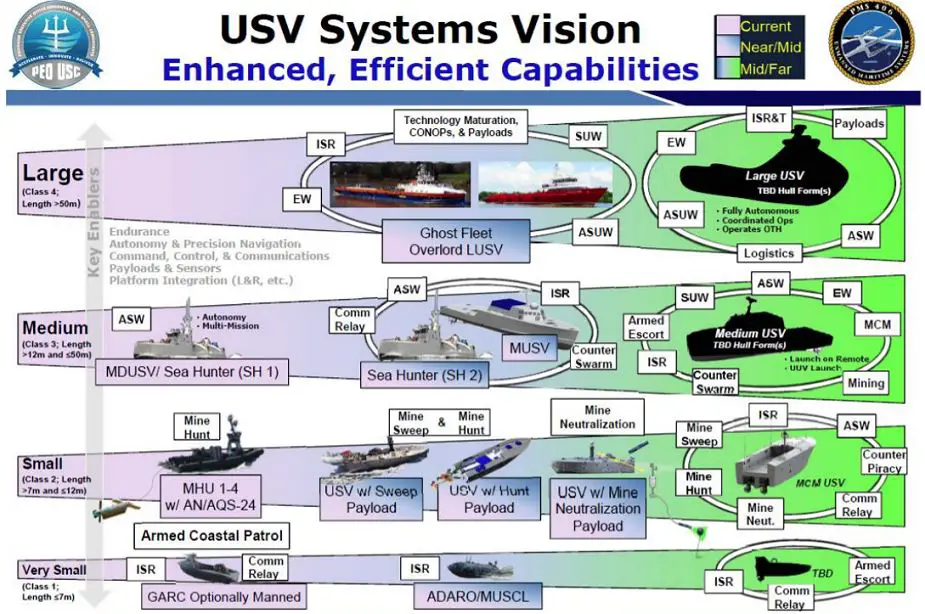Breaking news
SERCO awarded contract to support the U.S. Navy’s Unmanned Surface Vehicle Family of Systems.
Serco Inc., a provider of professional, technology, and management services, has been awarded one of 40 positions on the indefinite-delivery/indefinite-quantity, multiple award contract (IDIQ-MAC) to support the U.S. Navy’s Unmanned Surface Vehicle Family of Systems. The contract has a ceiling value across all awardees of $982 million over a 10-year period, if all options are exercised.
 US Navy’s unmanned surface concept and program. (Picture source NAVSEA)
US Navy’s unmanned surface concept and program. (Picture source NAVSEA)
Serco will compete for task orders to help the U.S. Navy maintain and modernize to meet current and future operational requirements, which includes supporting the current Unmanned Surface Vehicle (USV) systems and subsystems as well as future USV systems and subsystems for Program Executive Office Unmanned and Small Combatants (PEO USC), Program Management NAVSEA 406 (PMS 406).
“Earning a spot on this contract vehicle enables Serco to expand our delivery of the Design, Integrate, and Support lifecycle for the U.S. Navy,” said Dave Dacquino, Chairman and CEO of Serco Inc. “As one of the largest providers of naval modernization services in the U.S., Serco looks forward to the opportunity to compete and win new task orders.”
The U.S. Navy in FY2021 (Fiscal Year) and beyond wants to develop and procure three types of large unmanned vehicles (UVs). These large UVs are called Large Unmanned Surface Vehicles (LUSVs), Medium Unmanned Surface Vehicles (MUSVs), and Extra-Large Unmanned Undersea Vehicles (XLUUVs). The Navy is requesting $579.9 million in FY2021 research and development funding for these large UVs and their enabling technologies.
The U.S. Navy envisions LUSVs as being 200 feet to 300 feet in length and having full load displacements of 1,000 tons to 2,000 tons. The Navy wants LUSVs to be low cost, high-endurance, reconfigurable ships based on commercial ship designs, with ample capacity for carrying various modular payloads—particularly anti-surface warfare (ASuW) and strike payloads, meaning principally anti-ship and land-attack missiles.
The U.S. Navy defines MUSVs as being 45 feet to 190 feet long, with displacements of roughly 500 tons. The Navy wants MUSVs, like LUSVs, to be low-cost, high-endurance, reconfigurable ships that can accommodate various payloads. Initial payloads for MUSVs are to be intelligence, surveillance and reconnaissance (ISR) payloads and electronic warfare (EW) systems.
The XLUUV program of U.S. Navy , also known as the Orca program, was established to address a Joint Emergent Operational Need (JEON). As shown in Figure 2, the U.S. Navy defines XLUUVs as UUVs with a diameter of more than 84 inches, meaning that XLUUVs are to be too large to be launched from a manned Navy submarine.33 Consequently, XLUUVs instead will transported to a forward operating port and then launched from pier. The Navy wants XLUUVs to be equipped with a modular payload bay for carrying mines and other payloads.




























